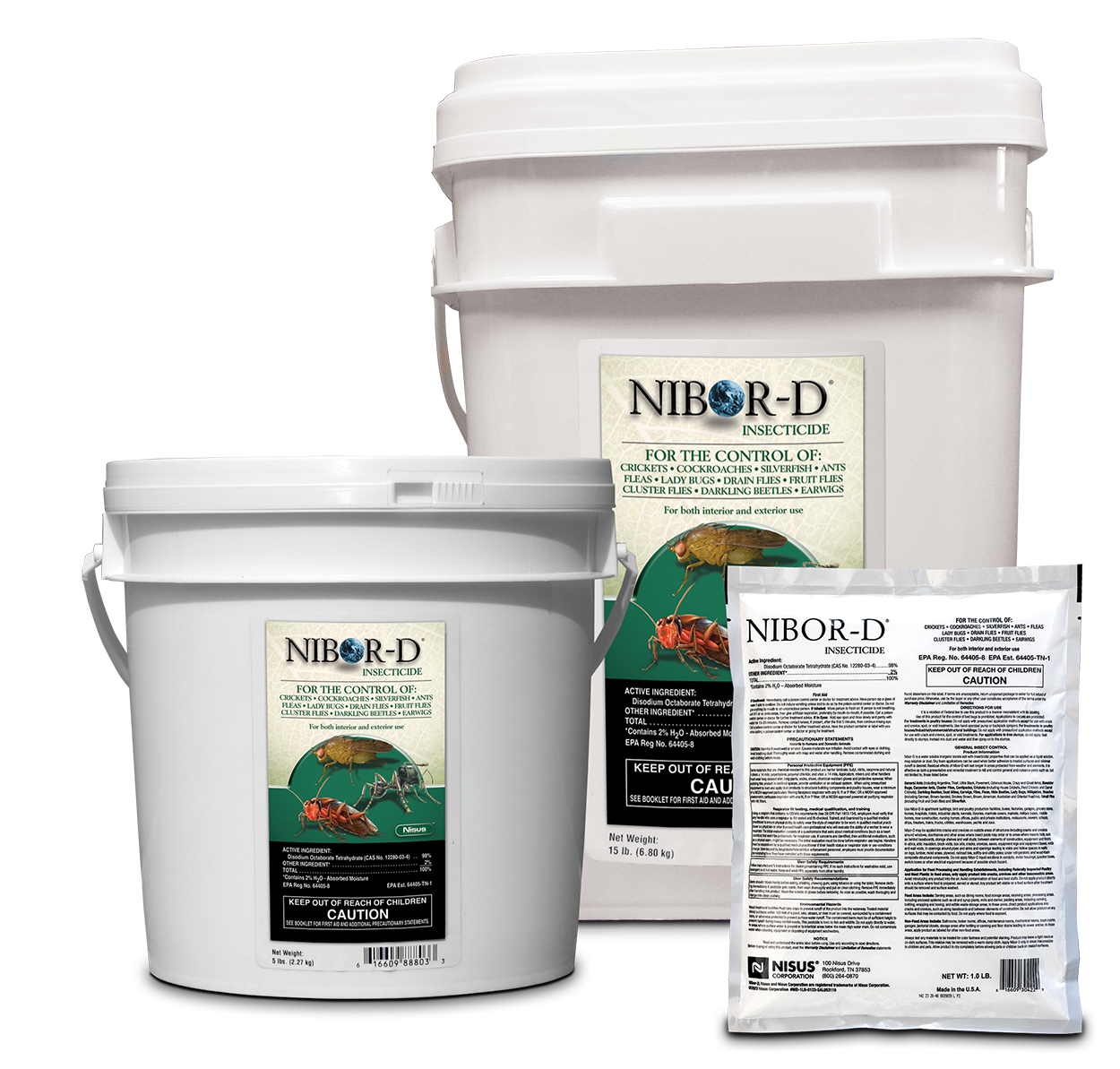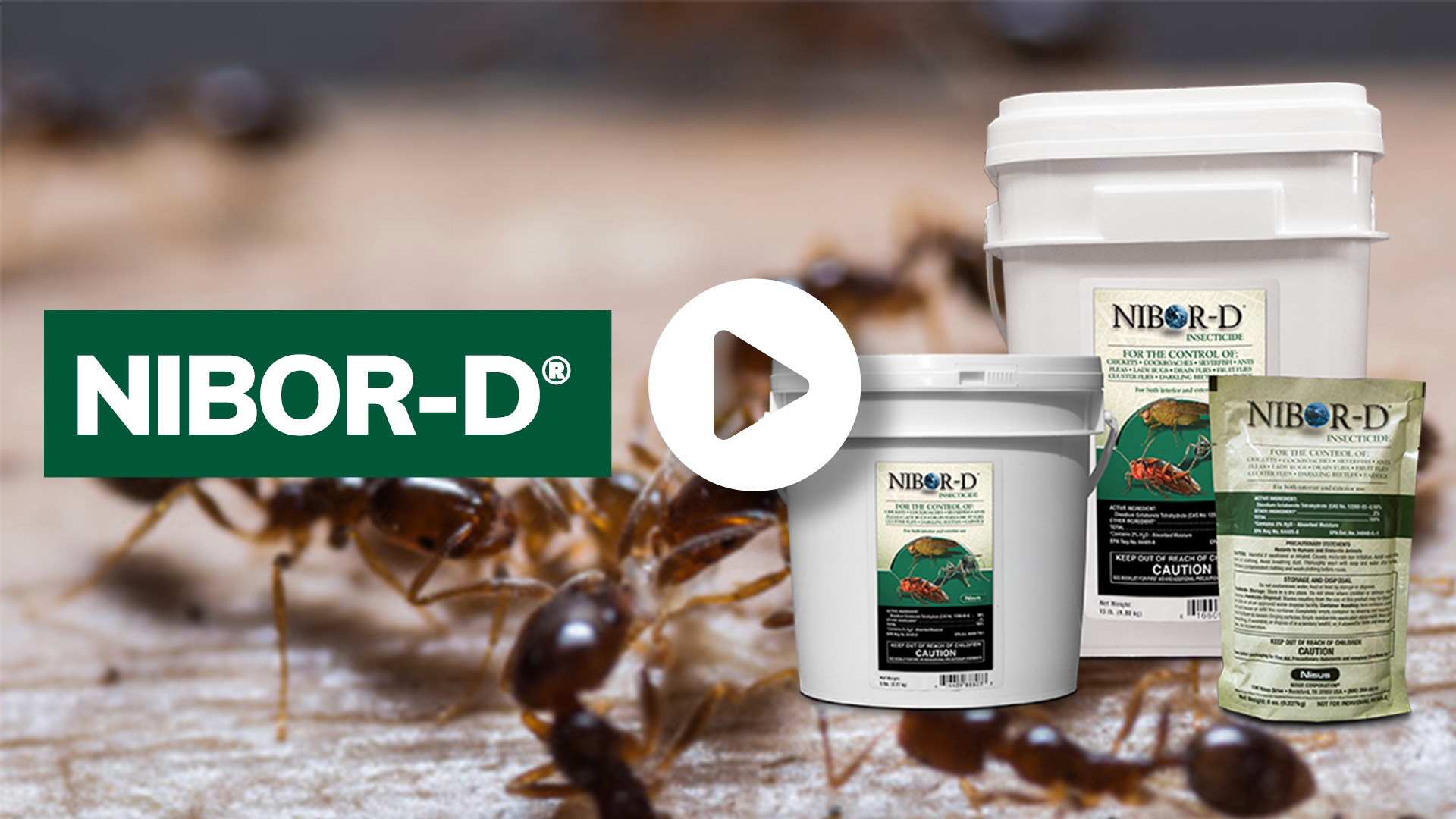NIBOR-D® Insecticide is a borate powder used as a dust or liquid in crack and crevice applications. Prevents and controls carpenter ants, crickets, cockroaches, silverfish, earwigs, boxelder bugs, water bugs, cluster flies, centipedes, millipedes, ants, mildew and fungi. Used as a dust liquid or foam, it is particularly effective at pest control against small flies and all types of cockroaches in commercial kitchen sinks where they hide in drains and equipment.
WHAT YOU SHOULD KNOW ABOUT NIBOR-D
Introduction
Part of a Green Pest Management Program
Nibor-D is a borate dust that provides an inexpensive, multipurpose and flexible means of getting to hard-to-reach areas. Its recently expanded label has added more pests, application methods and sites, making it even more versatile than ever.
Nibor-D can be used as a dust, foam or mixed as a liquid, even in a liquid mop solution. It is ideal for inaccessible areas where pests hide, such as cracks and crevices, attics, wall voids, around plumbing penetrations and so on. It can be used as a complement to Niban or Niban-FG without any bait contamination and does not cake or corrode metals, as boric acid does.
At a Glance
- Broad spectrum insecticide and fungicide.
- Kills and prevents carpenter ants & other ants, crickets, cockroaches, fleas, dust mites, lady bugs, palmetto bugs, silverfish, earwigs, cluster flies, fruit & drain flies, bird & poultry pests (darkling beetles & hide beetles), millipedes and wood destroying pests (termites, misc. beetles & borers, mildew and fungi*).
- Apply in insecticide dust, foam or liquid form, including in a mop solution.
- Indoor/outdoor use.
- Foam and mop solutions for small flies
- New construction treatment for general pest prevention
- Created with a concern for the environment.
- Newly added applications and sites include:
- Liquid broadcast for flea larvae & dust mites
- Application into floor drains, manhole covers & cavities, refuse containers
- Treatment of attic insulation
- Treatment of bird & poultry production facilities
- Effective product for use with Green Pest Management programs.
- Active ingredient is a borate mineral salt.
- No known resistance.
*Not labeled for mildew and fungus in California.
A Closer Look
Nibor-D can be used in Green Pest Management® programs. As a borate-based product, Nibor-D has a very low mammalian toxicity and targets specific pests. This reduces the impact on people, pets and non-target insects beneficial to the environment (such as butterflies and honeybees). Also, Nibor-D is applied only where needed, further reducing any unnecessary impact to the rest of the environment. And since it is long-lasting, less product is required for a successful and effective Green Pest Management program.
How it Works
Nibor-D’s effect on target pests comes from the way the boron molecules in its active ingredient interfere with a pest’s metabolism. Because pests cannot excrete excess boron as humans can, the boron builds up in their systems and ultimately interrupts the normal chemical process of transforming food into energy. So, by ingesting Nibor-D, the insect is unable to extract nutrition from its food and effectively starves to death. Humans, pets and other living things don’t share the risk because they are able to excrete excess boron from their bodies.





